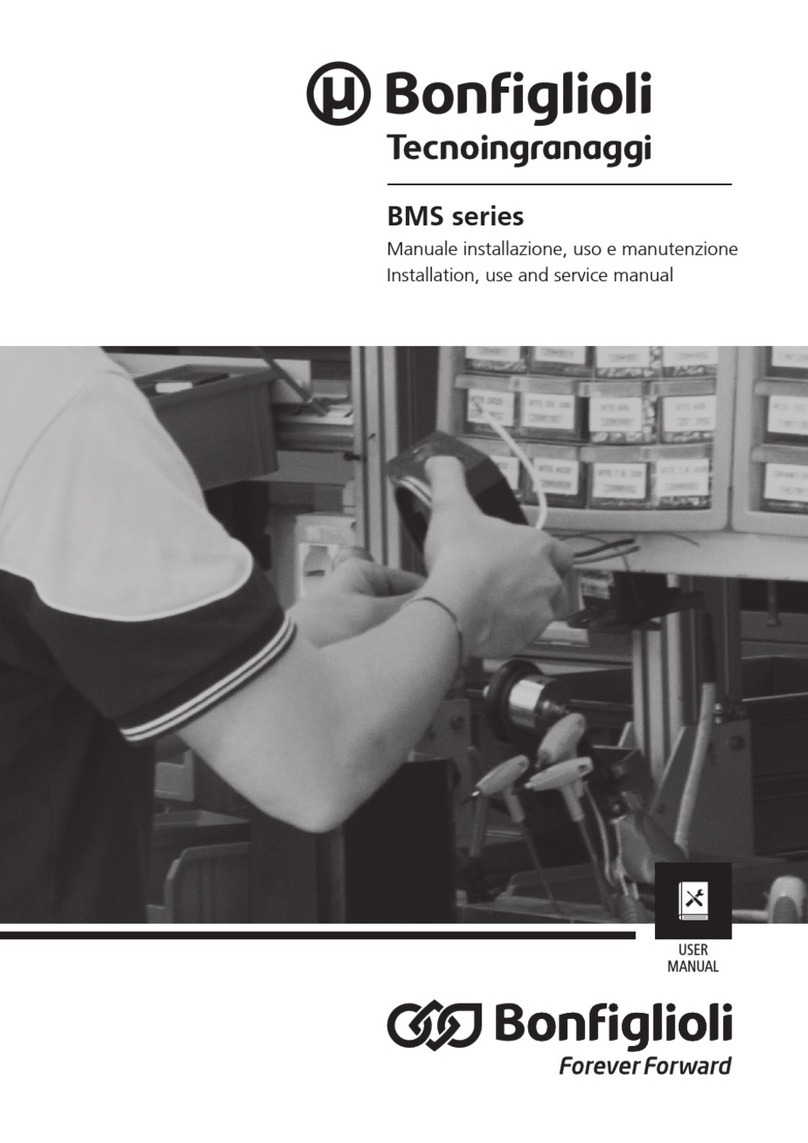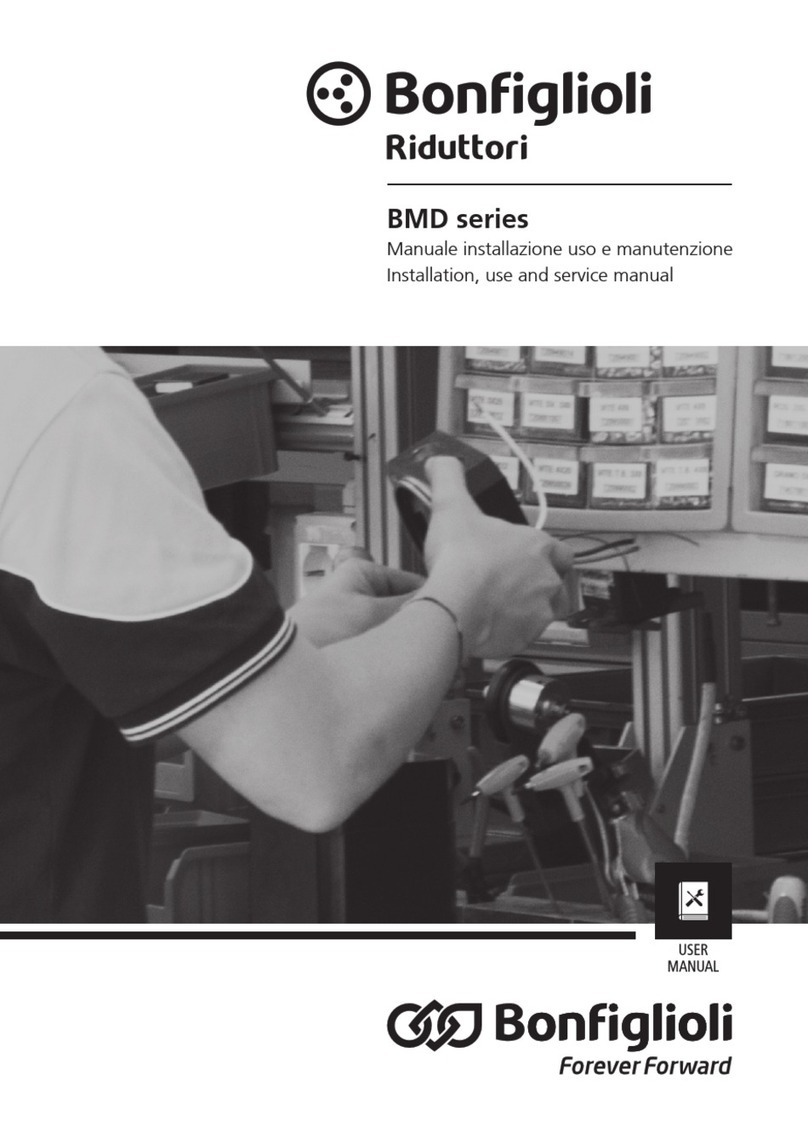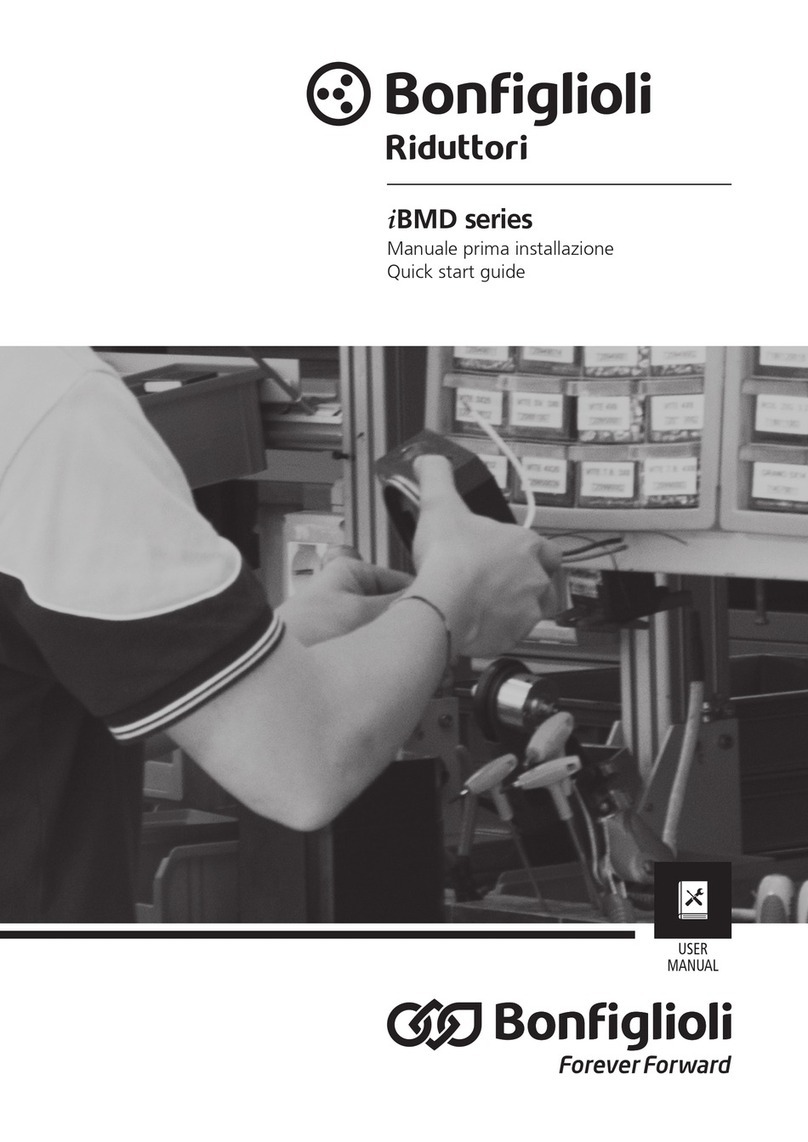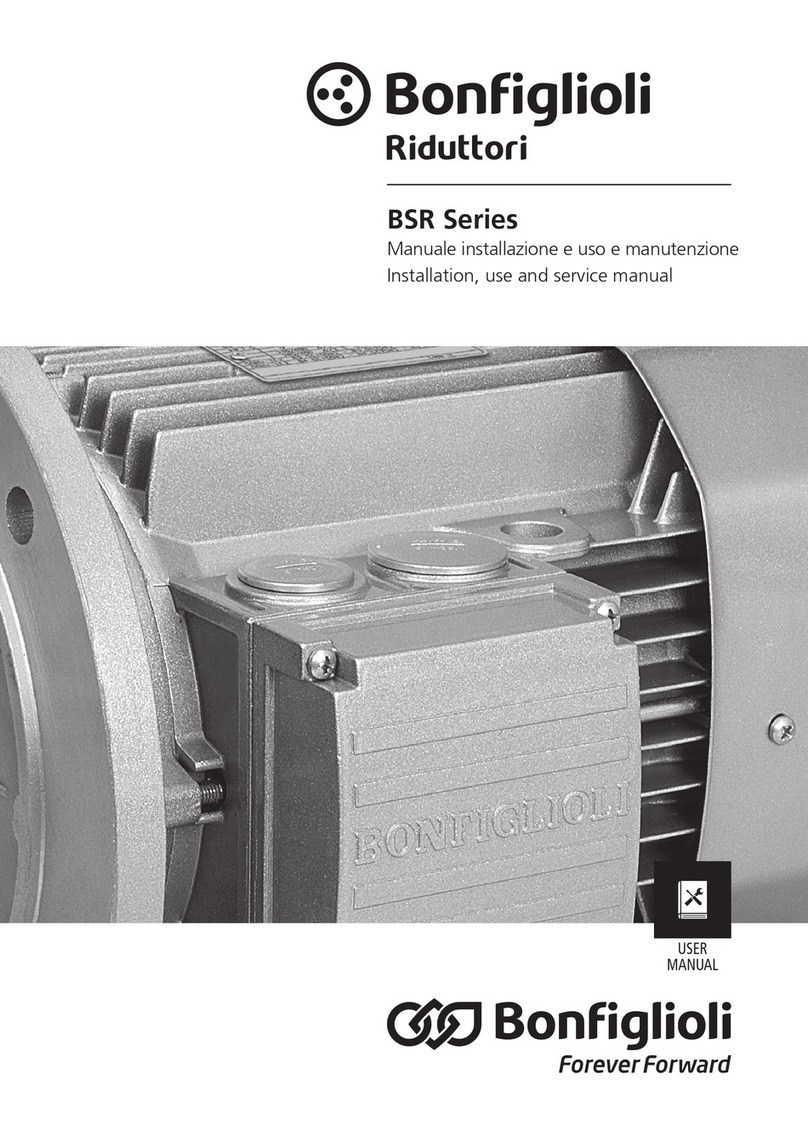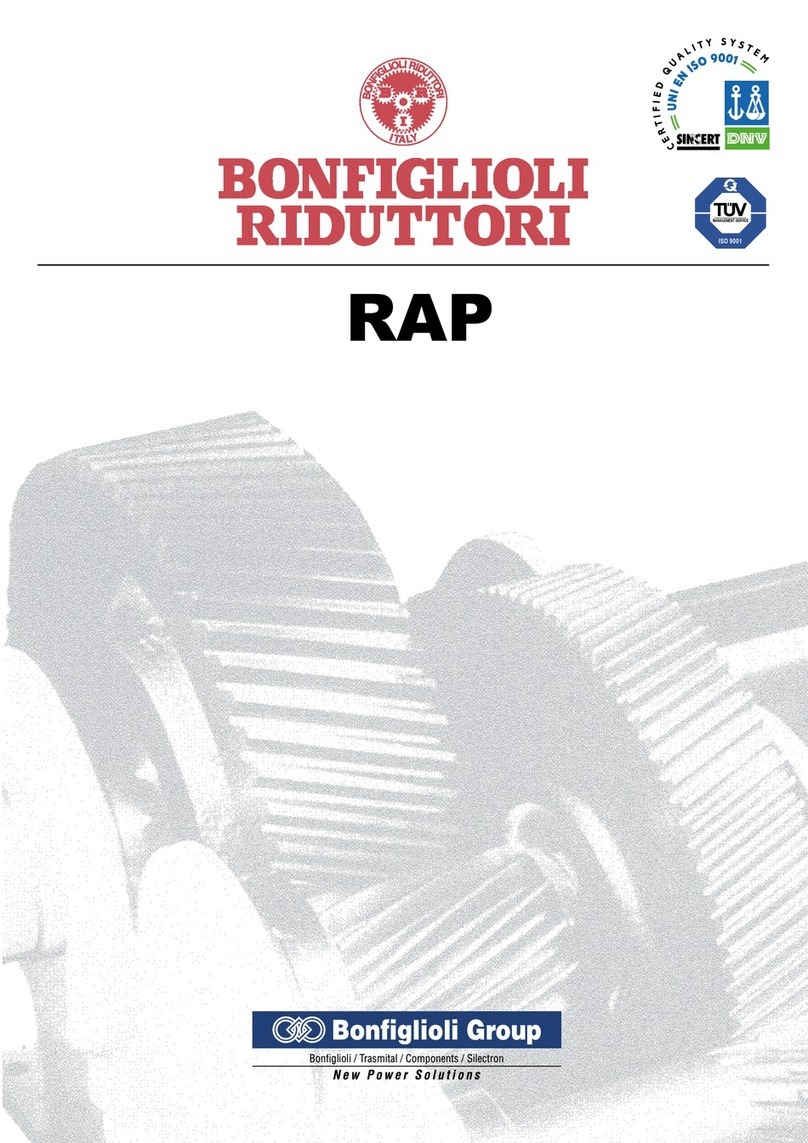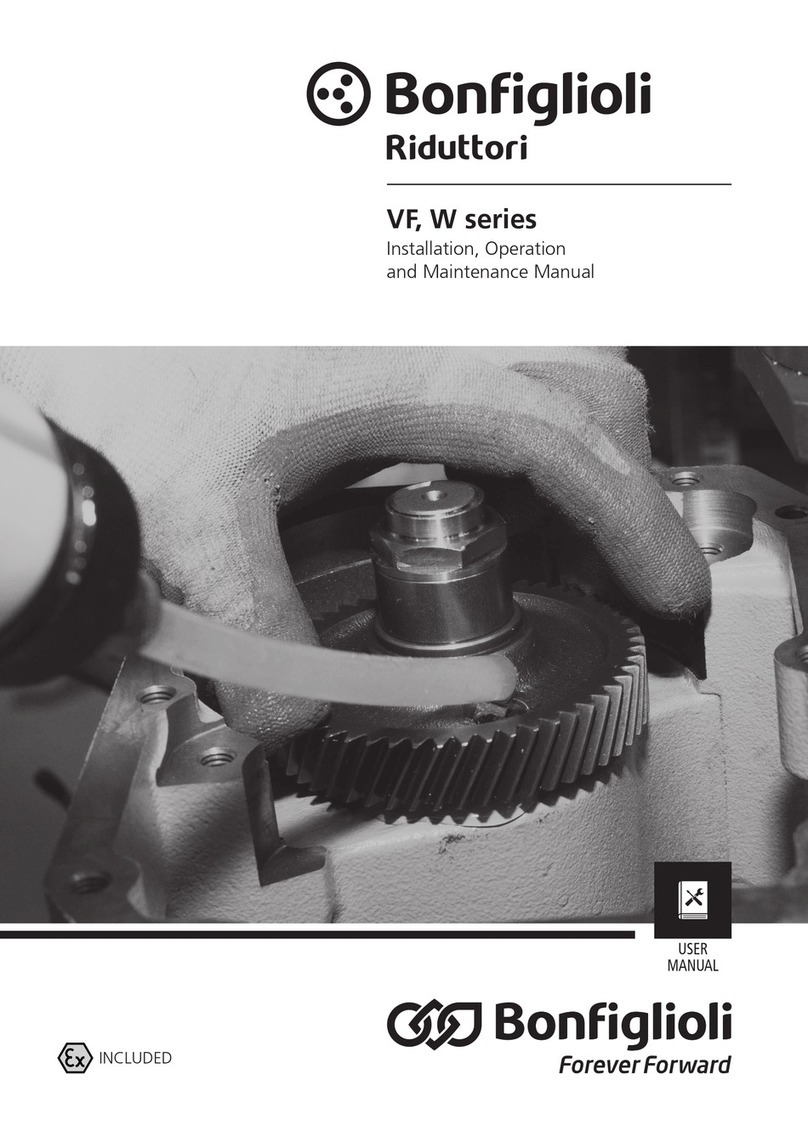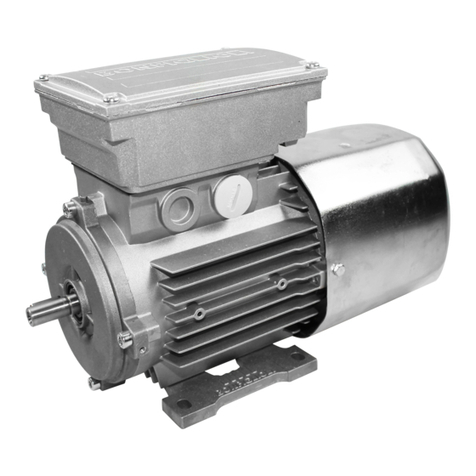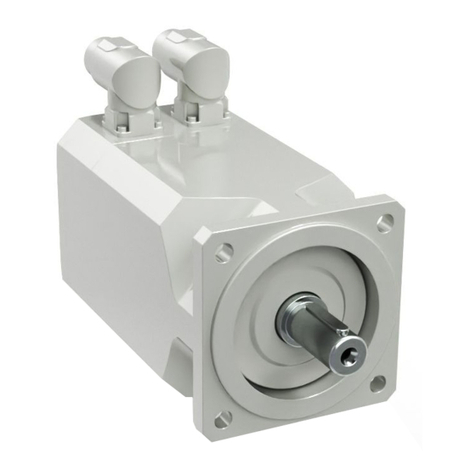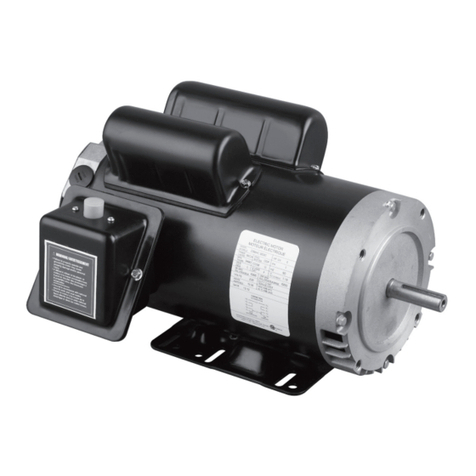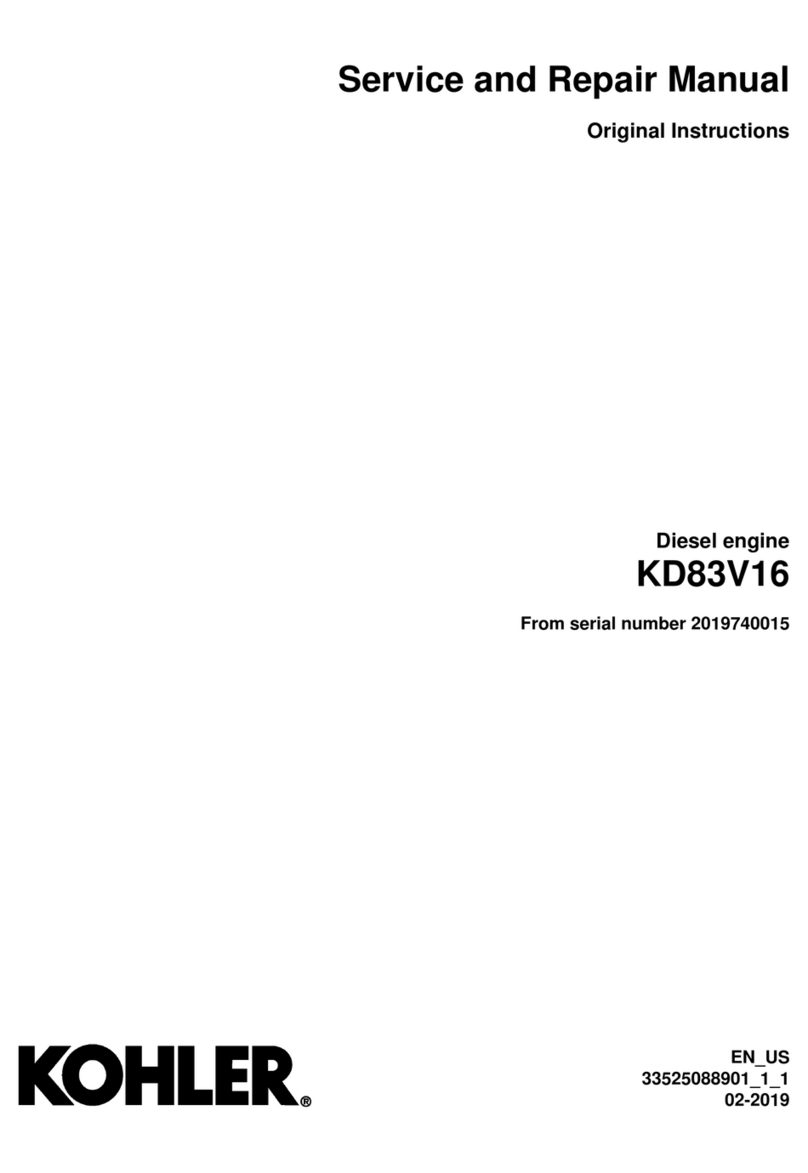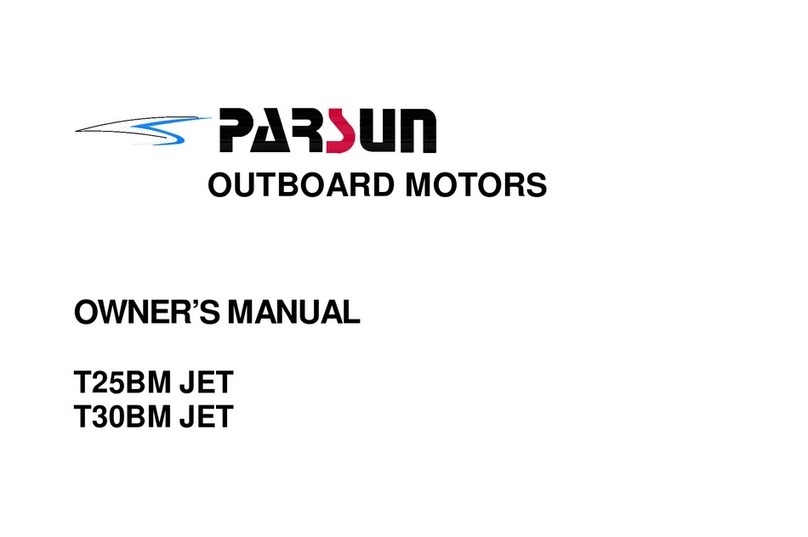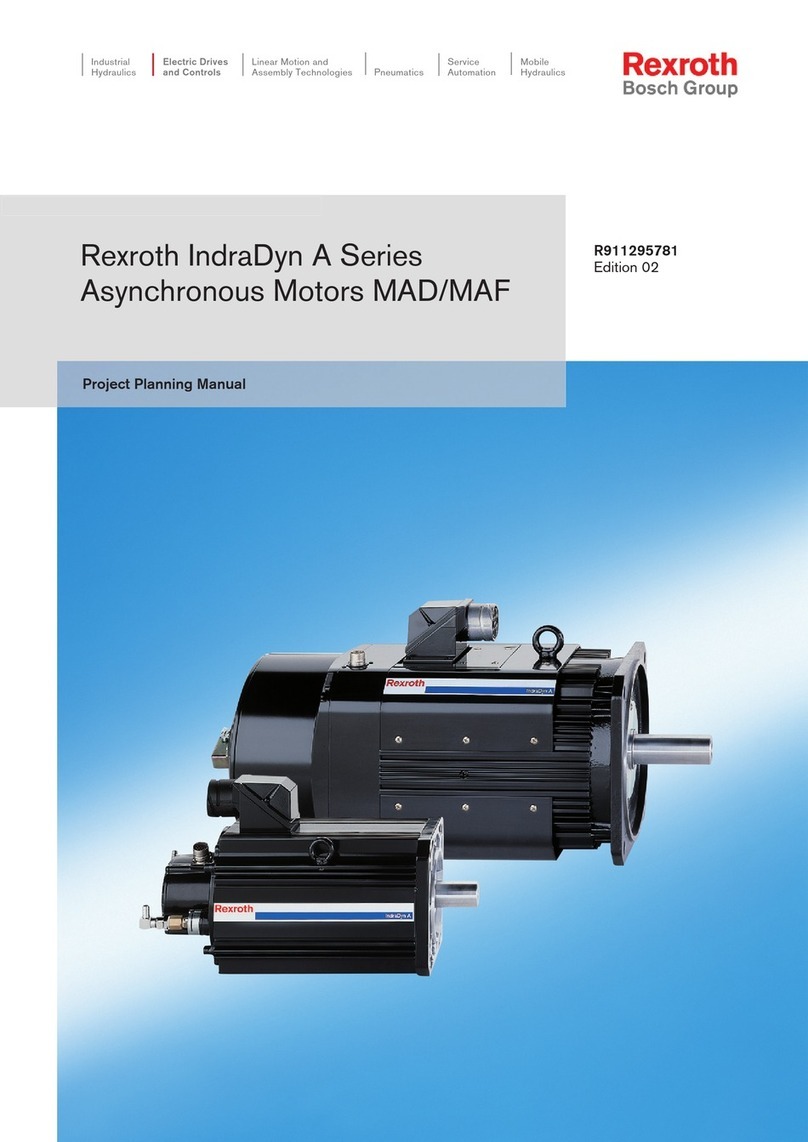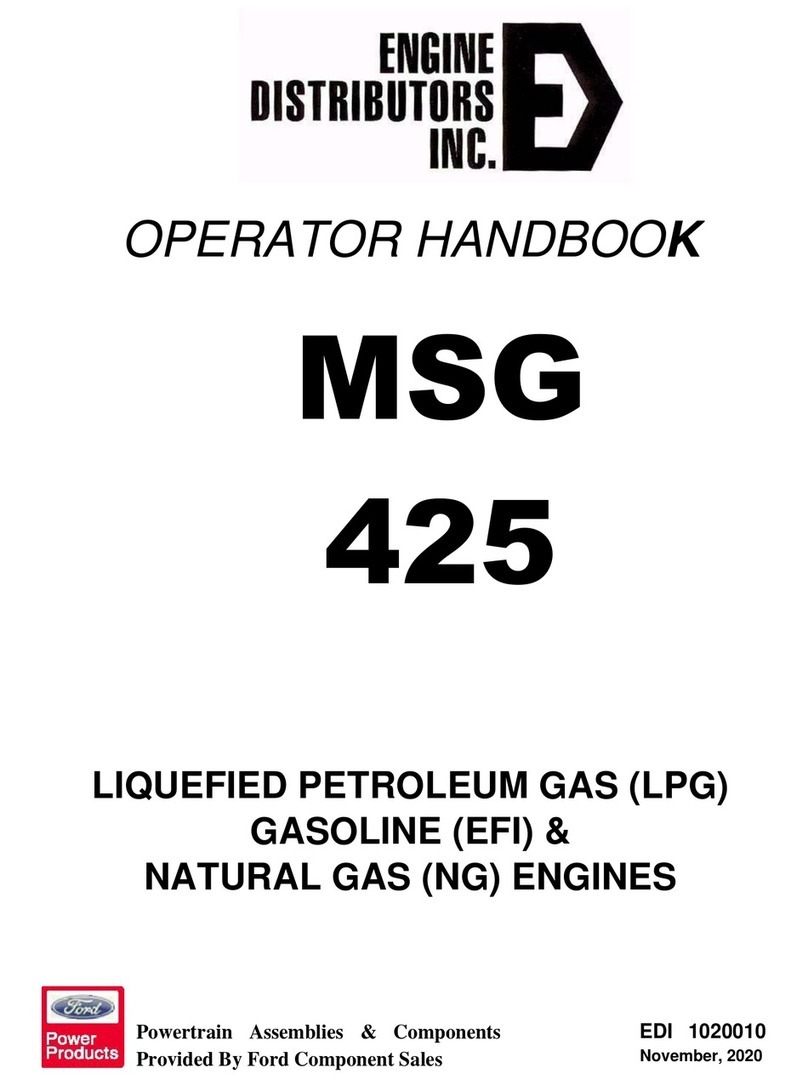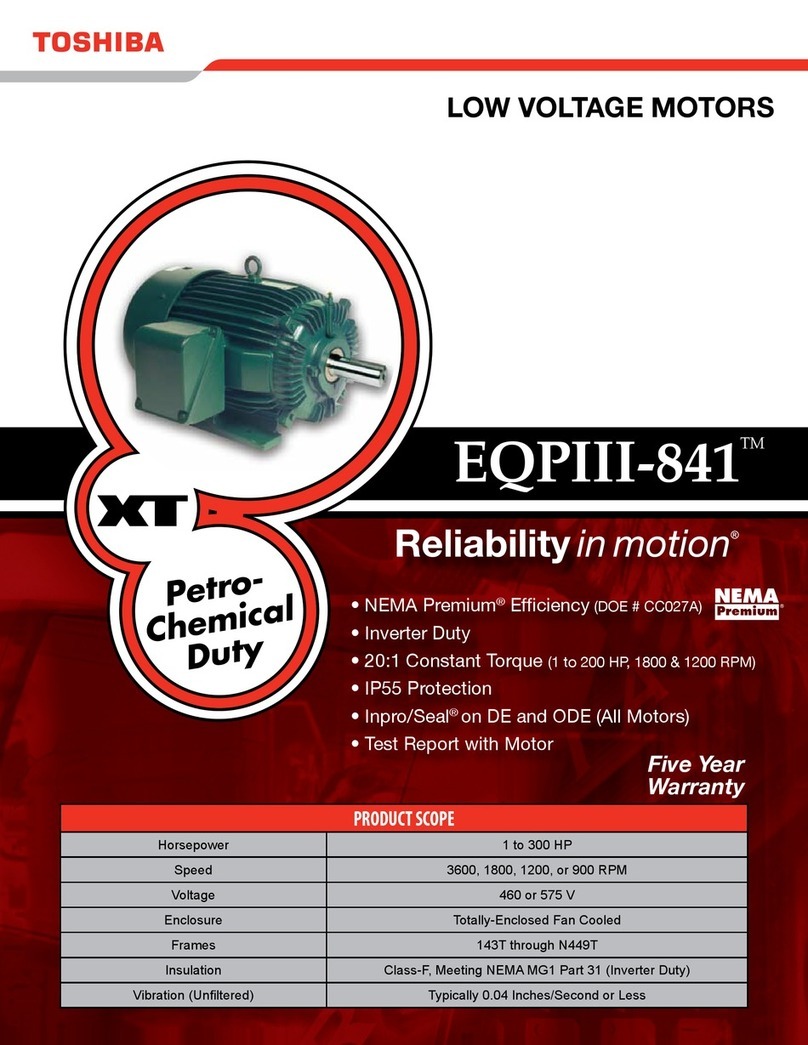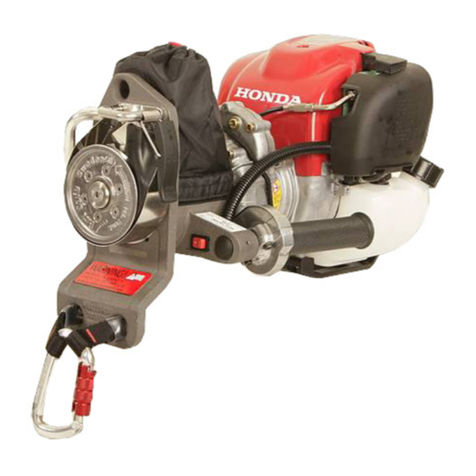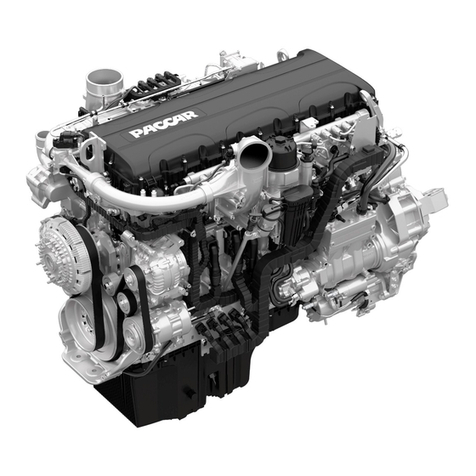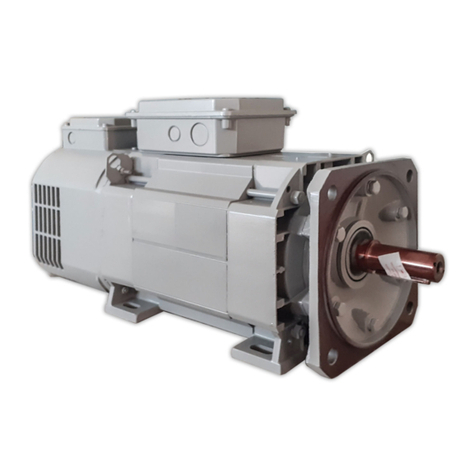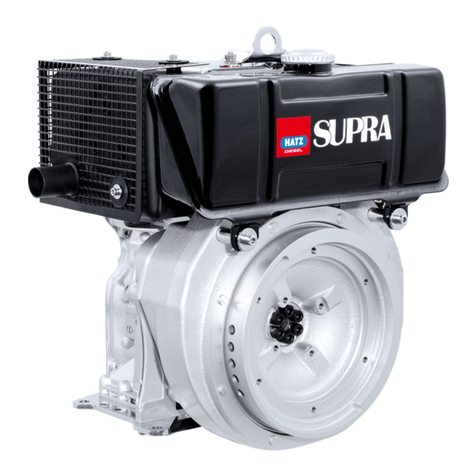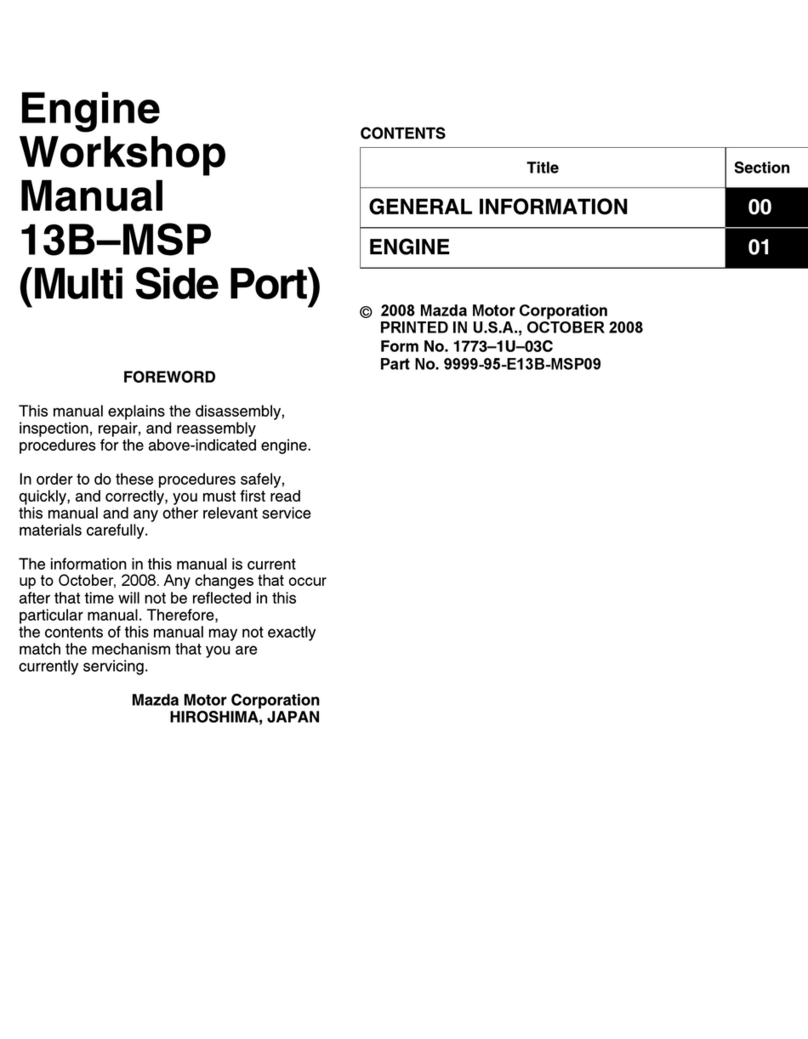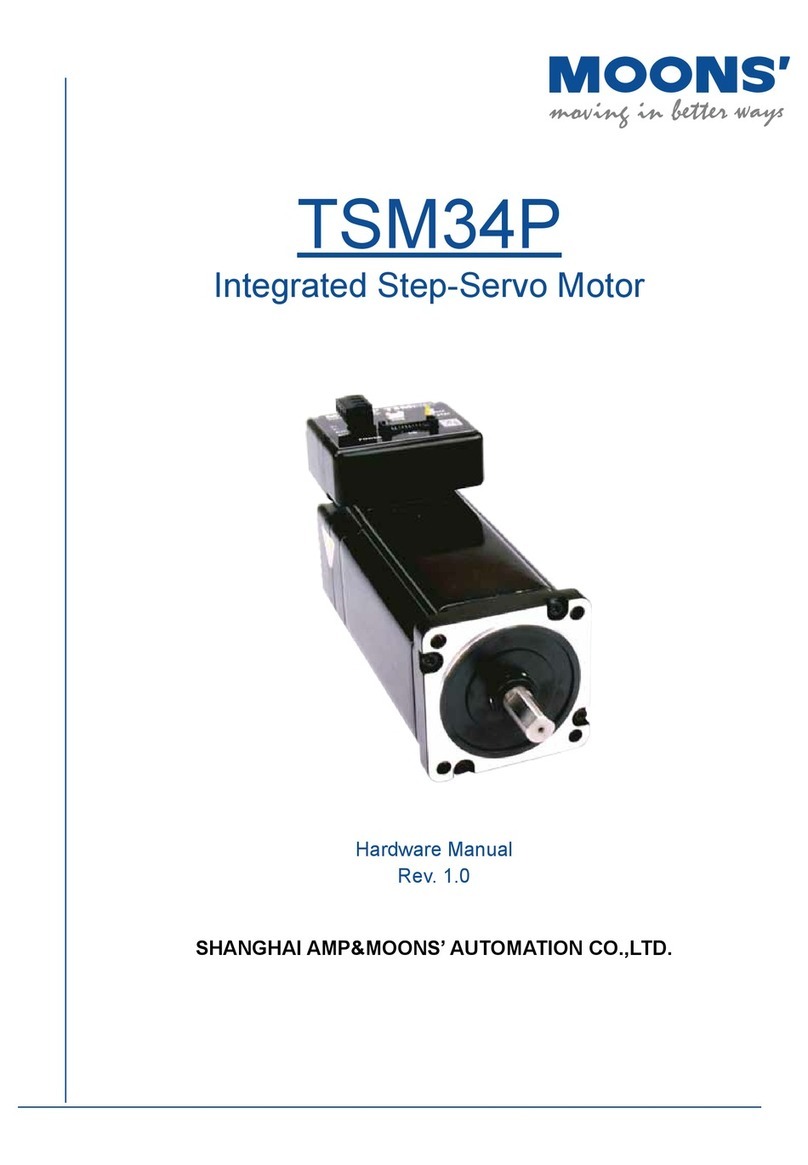
1
INSTALLATION, USE AND SERVICE MANUAL
1.0 - GENERAL INFORMATION 2
1.1 - PURPOSE OF THE MANUAL ...................................................................................................................2
1.2 - EQUIPMENT IDENTIFICATION ................................................................................................................3
1.3 - GLOSSARY AND TERMINOLOGY ............................................................................................................4
1.4 - REQUESTING TECHNICAL ASSISTANCE .................................................................................................4
1.5 - MANUFACTURER’S LIABILITY ................................................................................................................4
2.0 - TECHNICAL INFORMATION 5
2.1 - GEAR UNIT DESCRIPTION .....................................................................................................................5
2.2 - CONFORMITY TO STANDARDS ..............................................................................................................5
2.3 - OPERATING LIMITS AND CONDITIONS ...................................................................................................6
3.0 - SAFETY INFORMATION 7
3.1 - SAFETY STANDARDS ............................................................................................................................7
4.0 - HANDLING AND TRANSPORT 8
4.1 - PACKAGING .........................................................................................................................................
4.2 - HANDLING INSTRUCTIONS ....................................................................................................................9
4.2.1 - Moving packages ..........................................................................................................................9
4.2.2 - Moving the equipment....................................................................................................................9
4.3 - STORAGE ..........................................................................................................................................10
5.0 - INSTALLATION 11
5.1 - INSTALLING THE GEAR UNIT ...............................................................................................................11
5.1.1 - Gear units with solid output shaft....................................................................................................14
5.1.2 - Gear units with hollow output shaft .................................................................................................14
5.1.3 - Gear units with shrink disk ............................................................................................................15
5.1.4 - Shaft mounted gear units series F ..................................................................................................15
5.2 - INSTALLING AN IEC-STANDARD FLANGED MOTOR...............................................................................16
6.0 - TESTING THE GEAR UNIT 17
7.0 - USING THE E UIPMENT 19
8.0 - MAINTENANCE 20
.1 - ROUTINE MAINTENANCE .....................................................................................................................21
.2 - LUBRICANTS ......................................................................................................................................23
.3 - OIL CHANGE .......................................................................................................................................23
.4 - RECOMMENDED/PERMITTED OILS.......................................................................................................24
.5 - CHECKING EFFICIENCY.......................................................................................................................26
.6 - CLEANING ..........................................................................................................................................26
.7 - PAINT.................................................................................................................................................26
9.0 - REPLACING PARTS 27
9.1 - TAKING APART OF THE IEC-STANDARD FLANGED MOTOR ....................................................................27
9.2 - SCRAPPING THE GEAR UNIT ...............................................................................................................27
10.0 - TROUBLESHOOTING 28
ANNEX 1 - CHECKING OIL LEVEL ON ATEX-SPECIFIED GEAR UNITS 29
ANNEX 2 - LUBRICANT CHARGE UANTITY 32
Helical in-line gear units, series C ...................................................................................................................32
Bevel helical gear units, series A.....................................................................................................................33
Shaft-mounted gear units, series F ..................................................................................................................34
Worm gear units, series V..............................................................................................................................35
Worm gear units, series W.............................................................................................................................36
Single-stage helical gear units, series S ...........................................................................................................36
ANNEX 3 - CUSTOMER'S SHAFT 37
Series A .....................................................................................................................................................37
Series F .....................................................................................................................................................3
Series VF and W..........................................................................................................................................39
ANNEX 4 - LIFTING 40
ANNEX 5 - INSTALLING THE MOTOR ON TYPE VFR WORM GEAR UNITS 47
ANNEX 6 - CALIBRATING THE TOR UE LIMITER SLIP TOR UE 48
Revisions
Refer to page 50 for the catalogue revision index. Visit www.bonfiglioli.com to search for catalogues with up-to-date revisions.




















